Sometimes I feel like I’m on a hamster wheel.
But never has it occurred to me to literally make that happen.
For artists Alex Schweder and Ward Shelley, this is just another day at the office. The duo are currently living and working in a giant hamster wheel for 10 days until March 9 at the Boiler in Williamsburg, Brooklyn.
All in the name of art.
Titled In Orbit, the piece is a continuation of numerous installations where the artists live together in public spaces, which they refer to as “architectural performance pieces.”
For In Orbit, the rotating house is designed so that Shelley can live on the exterior of the wheel nearly 30 feet off the floor, while Schweder lives on the inside due to a fear of heights. Through coordinated movements the pair can rotate the wheel to access beds, desks, chairs and even a kitchen-bathroom combo.
Can you even imagine?
Shelley and Schweder also produced Flatland in 2007 (New York), Stability in 2009 (Seattle), and Counterweight Roommate in 2011 (Basel)—others in the “architectural performance series”—to further explore how constructed environments effect “subjectivity and the interrelatedness between people.”
Author Agnieszka Gratza said of Flatland:
Physically and emotionally challenging for the performers, who were free to leave at any point but couldn’t then re-enter the building, this piece made a deep impression on the audience who watched them go about their daily routine as best they could within the punishingly narrow confines of Flatland…. It was while working on this piece that Schweder came up with the term “performance architecture” to describe what they were doing. The first in a trilogy of “Architect Performed Buildings” on which Schweder and Shelley worked in tandem, Flatland was followed by Stability … and Counterweight Roommate….
And, now, In Orbit.
It’s worth having a look at some of the previous architectural performance pieces:
(They are all equally mind-boggling.)
Flatland.
From Ward Shelley’s website: Six people, 20 days, an expedition in two dimensions.
One of the six artists who lived in Flatland, Eve La Cour, wrote the following blog-post after one week:
The restlessness has hit me. It is tickling my muscles, even though i’m lying silently on my back; with the feeling of that i can’t do much else than lie here. I’m used to moving around a lot. Not really training or physical work, but i’m used to moving around a lot between different place and different spaces.
Now i’ve been here for eight days, and suddenly i feel my mind is slowly falling apart. I think of an interview i did with Kate, a girl who was sitting in prison for seven years. Her cell looked a little bit like a library. She used to escape in those books. Now and then she closed her door to lock out the prison, and all it’s crap. But it demands a certain level of energy or strength, she said—to take yourself seriously, to take care of yourself, to be able to feel how you are doing.
Here it is absolutely different. I’m not surrounded with fucked up prisoners, whose freedom has been forcibly taken, and confined to a cell. I have chosen this myself, and i have chosen it with five others, who have also chosen this themselves. But maybe it makes it even more difficult to isolate ones-self. A kind of social space has taken up a lot of space, though it has definitely changed over the days. In the beginning, it was exciting to get to know each other, where now it seems like we have less and less to talk about – or are less able to talk! (For more…)
Alex Schweder said this about performance architecture:
It is based on the notion that relationships between occupied spaces and occupying subjects are permeable. This is to say that a subject first perceives his or her environment and is then changed by that perception. This person in turn alters their environment to make it correspond to their fantasy. This process continues until the scrimmage of objects and subjects produces an architecture where referring to the two as distinct becomes irrelevant.
Stability.
Quoted from Shelley’s website:
An architectural performance piece that will be occupied by the artists 24 hours a day during the first week of the show. In counterpoint to its name, Stability. is a piece in which balance is a matter of negotiation.
Like a see-saw, this 25 foot structure is a house balanced on a central pivot with the two artists living at either end. When occupied the two bodies will need to move in the space in relation to one another to keep the structure straight. Visually separated by a kitchen and bathroom in the center, the occupying bodies will sense each other through displacement of weight. Activities will naturally change (willingly or not) as the house shifts.
Counterweight Roommate.
From Shelley’s website:
Tethered to either end of a single rope, movement in this vertical habitat for two depends on the opposite movement by one’s roommate. When one wishes to go up to the kitchen, the other must go down to the bathroom.
Counterweight Roommate is a self-contained living unit with facilities for eating, sleeping, and working. It was inhabited day and night for the continuous five days of Scope Basel by the artists.
This is the kind of art that separates the mice from the men. I don’t even like to pee with the door open when it’s just my husband and me.
And—aside from Flatland—it’s not only that these artists are on display. They have to work together to balance their existences, literally and metaphorically. I can’t imagine a better metaphor for relationships—the give and take, the up and down, the back and forth.
Though most of us would prefer to keep it that way—as a metaphor.
~
For oh-so-much more information and photos on the architectural performance pieces of Ward Shelley and Alex Schweder, click here, here and here, for starters.
Love elephant and want to go steady?
Sign up for our (curated) daily and weekly newsletters!
Editor: Catherine Monkman
Photos of In Orbit: Scott Lynch/Flickr, other photos linked back to their original sources.

 Share on bsky
Share on bsky
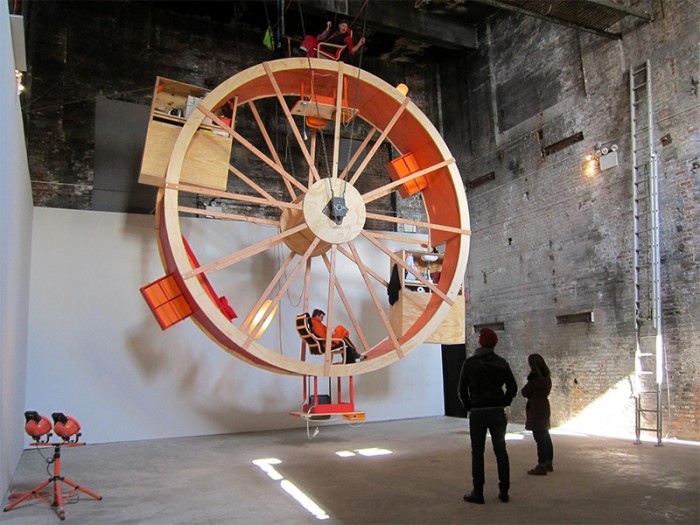
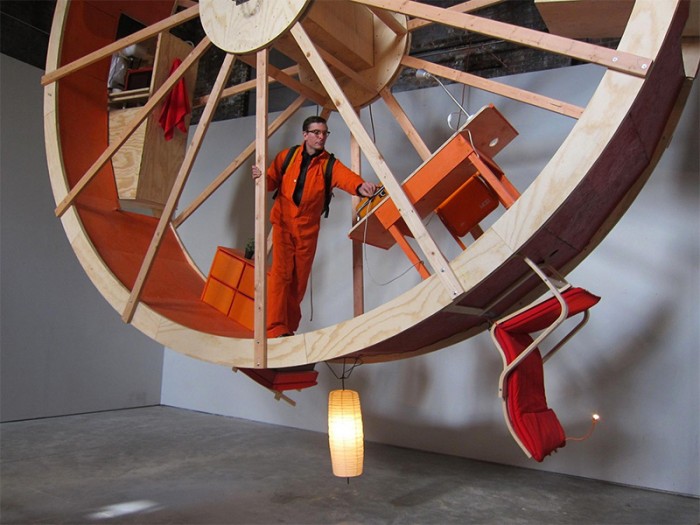
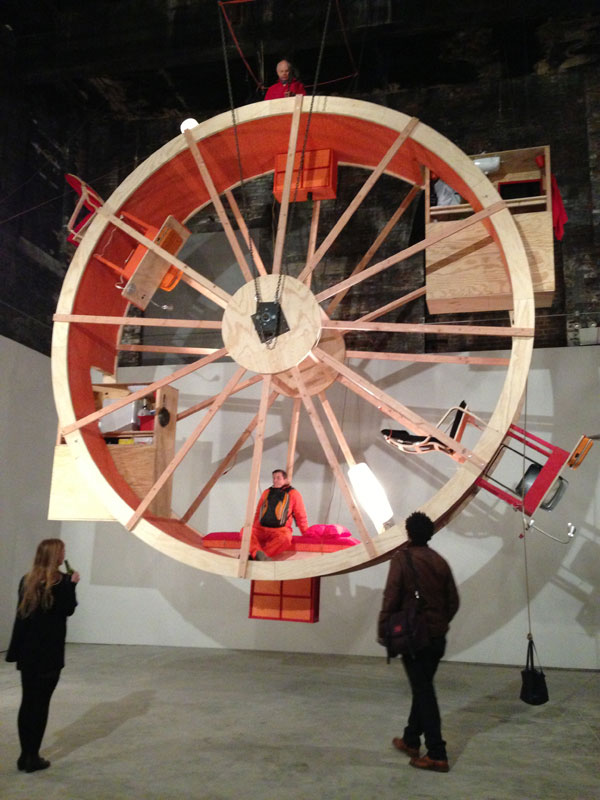
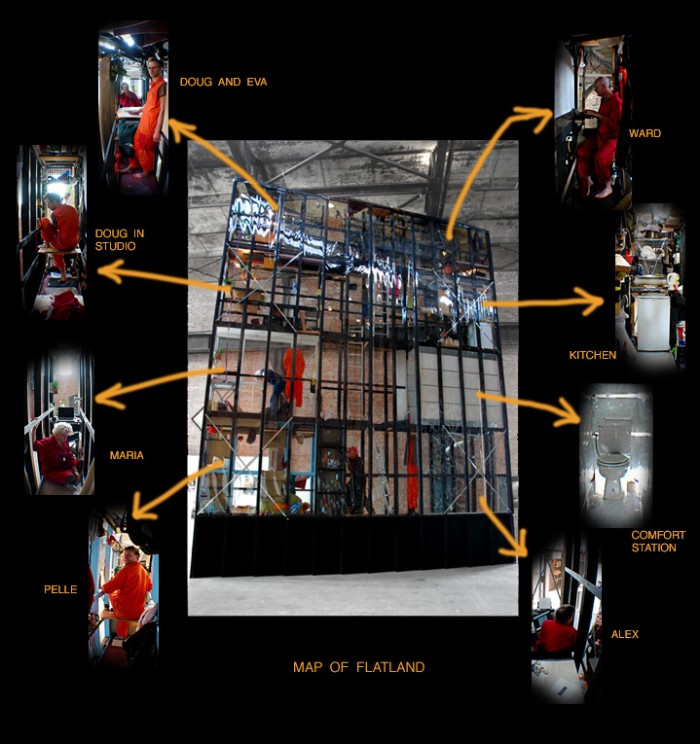
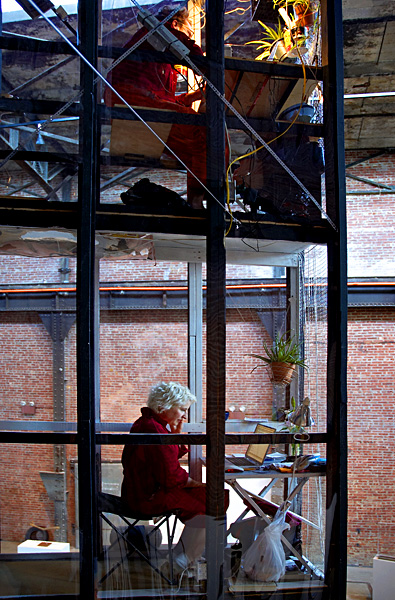

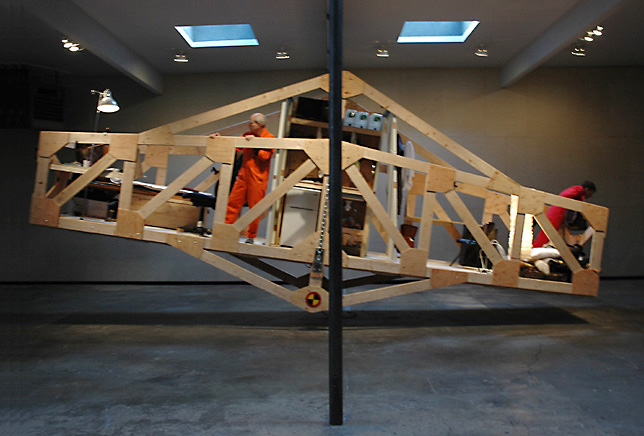


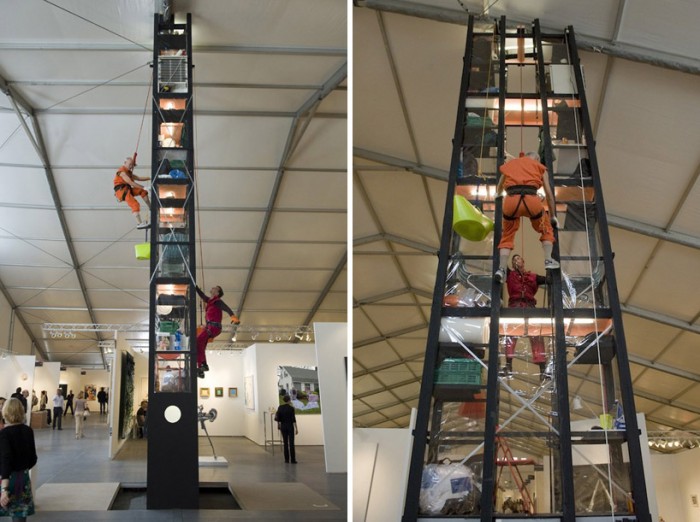






Read 0 comments and reply